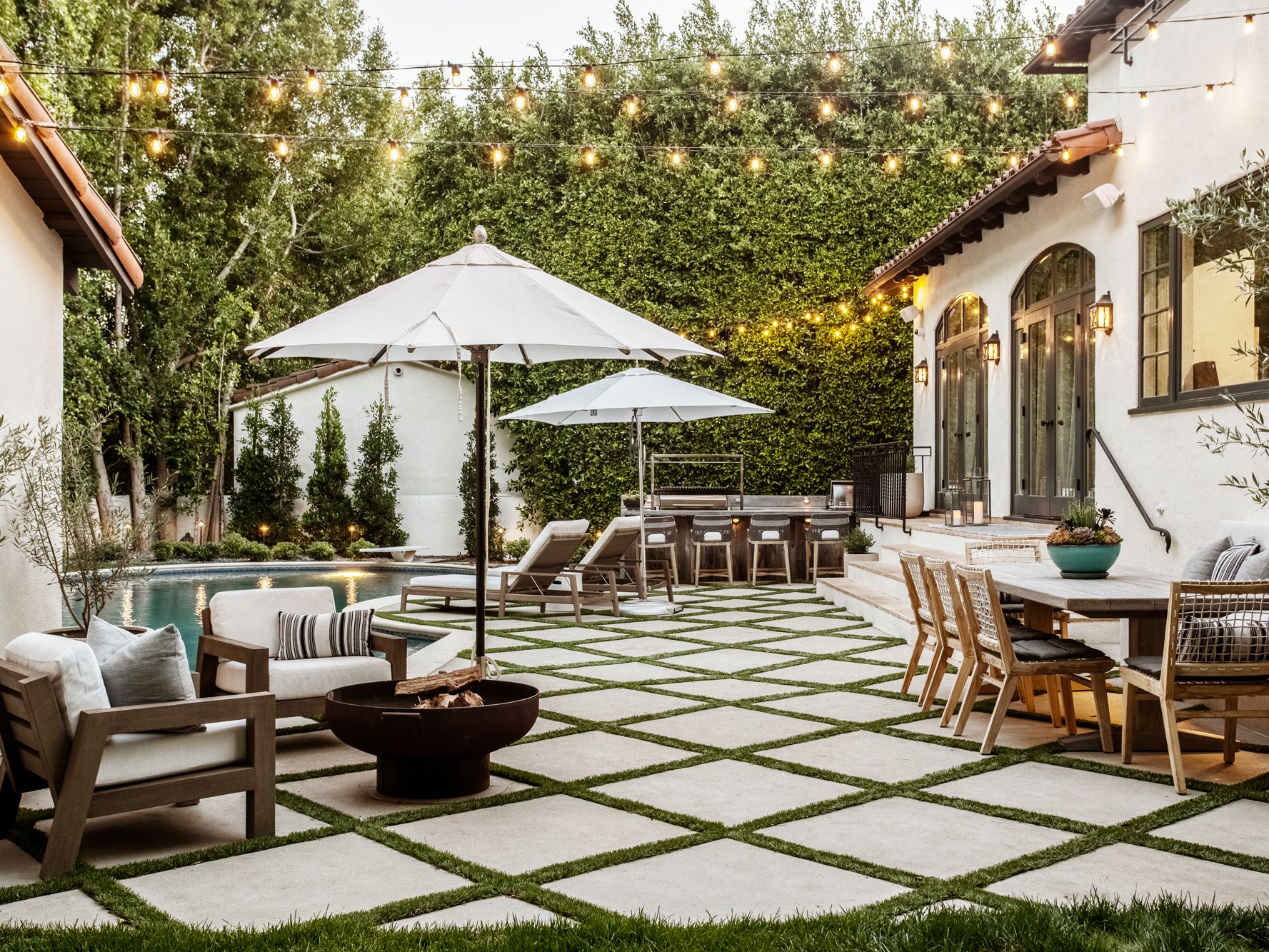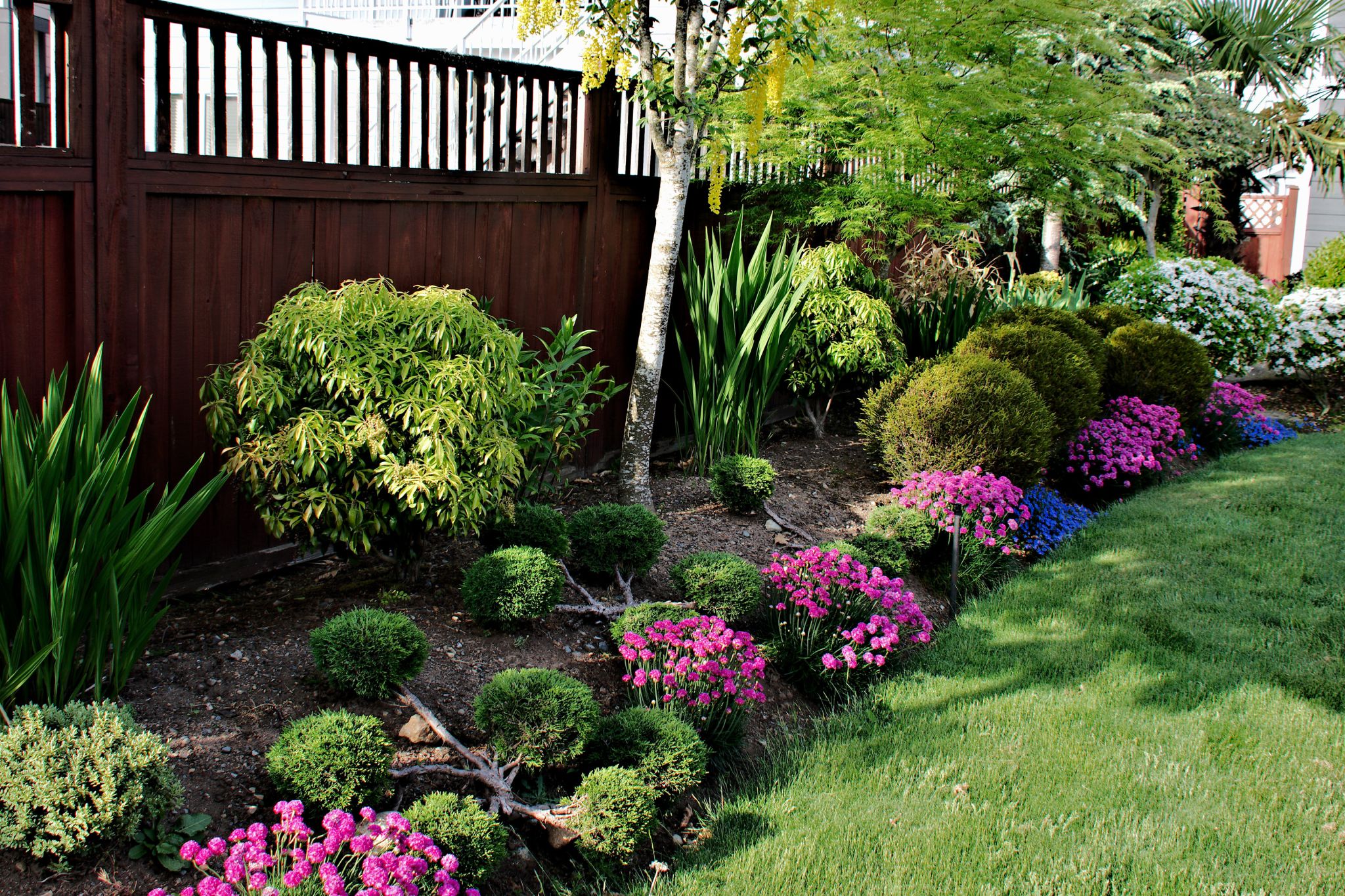Transform Your Area With Expert Outdoor Landscaping Providers: From Patios to Outdoor Kitchens
Changing outdoor rooms needs competence and careful preparation. Expert landscaping solutions can raise a property's functionality and appearances. From developing welcoming patios to crafting fully outfitted outdoor kitchens, these professionals bring useful knowledge. They consider neighborhood climates and sustainable practices, making sure each project lines up with the home owner's vision. What are the crucial elements to consider when initiating such an improvement? The solutions could surprise you.
The Advantages of Specialist Outside Landscape Design

Designing Your Suitable Outdoor Patio
When planning the best outdoor patio, home owners must show on both performance and aesthetics to produce a room that enhances their way of living. A properly designed patio area works as an expansion of the home, supplying an ideal location for relaxation, enjoyment, or eating outdoors. Key variables to consider include the shapes and size of the patio, which must harmonize with the bordering landscape and home architecture.Material option is likewise essential; choices such as natural rock, pavers, or timber can improve the total appearance while providing longevity. House owners must believe regarding furnishings arrangement, guaranteeing adequate room for movement and convenience. Integrating components like shade frameworks, fire pits, or planters can add character and utility.Lighting plays a substantial duty in patio area layout, enhancing atmosphere and usability throughout nights. Eventually, an attentively made patio can raise outdoor living experiences and enhance home value.
Developing an Outdoor Kitchen Area
Creating an outside kitchen enhances the performance and enjoyment of any kind of exterior area. Key attributes, such as grills, countertops, and storage, play a vital function in the design and format of this cooking haven. By taking into consideration important components, home owners can craft an area that flawlessly blends with their landscape while satisfying their cooking needs.
Vital Cooking Area Attributes
An outside kitchen area can change a backyard into a cooking haven, improving both performance and social interaction. Necessary kitchen features consist of a robust grill, which acts as the focal point for exterior cooking, permitting numerous cooking designs. Counter room is imperative, giving sufficient room for cooking and offering. A sink is additionally crucial, allowing simple clean-up and assisting in cooking jobs. In addition, including a refrigerator warranties ingredients and drinks stay fresh and obtainable. Storage space options, such as cupboards or racks, help keep organization and efficiency. Finally, incorporating weather-resistant materials assures durability and resilience, making the exterior kitchen a reputable area year-round. Together, these features create a welcoming atmosphere for family gatherings and enjoyable guests.
Design and Design Tips
While creating an outside kitchen, mindful thought of the format can substantially enhance both capability and aesthetics. Custom Patios. An effective format begins with zoning, dividing the space right into cooking, dining, and prep work areas. Placing the grill near the food preparation zone enhances the cooking procedure, while ensuring ample counter space for dish assembly is vital. Integrating an eating location that permits simple movement motivates social interaction. In addition, integrating storage space solutions such as cabinets and drawers keeps the space organized. It is essential to review the circulation of foot web traffic, avoiding blockage by keeping clear pathways. Ultimately, using durable materials that hold up against outdoor conditions warranties durability, while thoughtful illumination can develop an inviting atmosphere for evening gatherings

Enhancing Curb Appeal With Landscaping
Enhancing curb appeal via landscaping involves a careful balance of layout aspects that attract interest and produce a welcoming environment. Strategic plant positioning can highlight building functions, while thoughtful hardscaping includes framework and influence. With each other, these aspects change the outside of a residential or commercial property, making an enduring perception on site visitors and passersby.
Layout Components That Captivate
Engaging layout elements play a vital duty in enhancing a building's visual charm, as they create a welcoming initial perception for site visitors and passersby alike. Attentively created functions, such as decorative paths, stylish fence, and vivid flower beds, add to a natural visual. Unique focal factors, like an elegant water function or a striking sculpture, can draw focus and trigger interest. In addition, well-placed exterior illumination not only brightens paths however likewise highlights architectural information during the evening. Integrating multi-level landscapes with varying textures and shades adds deepness and measurement, developing a dynamic visual experience. Ultimately, these charming design elements work sympathetically to boost the general appeal of a building, making it stick out in your area.
Strategic Plant Placement
Strategic plant positioning significantly affects a property's visual appeal, complementing the interesting design aspects already in position. By thoughtfully picking and placing plants, homeowners can develop a harmonious blend of shade, texture, and height that draws the eye. For circumstances, placing taller plants towards the back and much shorter ones ahead develops depth. In addition, using native plants can enhance the landscape's sustainability while providing seasonal passion. Vibrant flowers can be intentionally placed near paths or entrances to invite guests, while evergreen hedges offer year-round structure. Moreover, including seasonal blooms warranties ongoing visual appeal. Overall, tactical plant setups not just elevate appearances yet also add to a welcoming atmosphere that reflects the homeowner's design and improves the total residential or commercial property worth.
Hardscaping for Influence
While plants play an essential role in landscaping, hardscaping components can substantially elevate a residential or commercial property's curb charm by offering framework and visual interest. Features such as stone paths, block patio areas, and decorative wall surfaces produce a strong foundation that matches plant. These components not only define areas yet also guide site visitors with the landscape, enhancing the general experience. In addition, including exterior lights right into hardscaping can accentuate architectural details and create a cozy, inviting ambience throughout the evening. Fire pits and outdoor cooking areas include performance, making outdoor areas much more habitable and enticing. By blending hardscaping with soft landscape design, property owners can achieve an unified equilibrium that astounds the eye and improves building worth. Ultimately, thoughtful hardscaping changes outside areas right into sensational displays.
Choosing the Right Plants and Materials
When choosing plants and products for exterior landscaping, it is important to consider factors such as climate, soil problems, and meant use see page of the room. An effective landscape design integrates with the natural atmosphere, ensuring that selected plants prosper and add to the total visual. Local climate influences the choice of vegetation; for circumstances, drought-resistant ranges are more effective in arid regions, while lush greenery suits much more warm climates.Soil quality additionally plays a substantial role in plant wellness. Performing soil examinations can aid establish pH levels and nutrition content, assisting the option of appropriate plant species. Furthermore, the designated use the space-- be it for relaxation, enjoyable, or gardening-- will affect selections regarding plants and materials. Resilient, weather-resistant materials are necessary for hardscaping elements like outdoor patios and sidewalks, while selecting plants that provide year-round passion improves the landscape's allure throughout the periods.
Sustainable Landscape Design Practices
Sustainable landscaping techniques concentrate on creating outside areas that are environmentally accountable and resource-efficient throughout their life Extra resources process. These methods highlight the use of indigenous plants, which require less water and maintenance, thereby promoting biodiversity and minimizing reliance on chemical plant foods and chemicals. Rainfall gardens and permeable paving are typically implemented to handle stormwater overflow, improving groundwater recharge and decreasing flooding risks.Additionally, lasting landscape design incorporates composting and natural mulch to enrich soil health and wellness, minimizing the demand for artificial dirt changes (Outdoor kitchens). Effective irrigation systems, such as drip irrigation, are designed to save water while ensuring plants obtain adequate hydration.Moreover, the use of reclaimed products for hardscaping components minimizes waste and encourages a circular economic situation. Through these methods, lasting landscape design not only improves aesthetic allure but also fosters ecological balance, adding to healthier settings for both neighborhoods and wild animals
:max_bytes(150000):strip_icc()/small-backyard-tiny-canal-cottage-2000-69db65780843418185854720edb6cef2.jpg)
Upkeep Tips for a Lasting Landscape
To ensure a landscape continues to be dynamic and healthy with time, routine maintenance is important. Property owners must focus on watering, ensuring plants obtain sufficient hydration, specifically throughout droughts. Mulching around plants not just saves wetness but also subdues weeds and regulates dirt temperature. Normal trimming of bushes and trees promotes healthy and balanced growth and improves aesthetics.Moreover, grass care is essential; mowing at the appropriate height and aerating dirt can boost health and wellness and resilience. Fertilizing plants appropriately, based upon soil tests, supports nutrient demands and cultivates robust development. Additionally, pest management ought to be aggressive, using incorporated parasite monitoring techniques to reduce damages without damaging beneficial insects.Seasonal clean-ups, including leaf removal and particles clearance, help preserve an arranged appearance. Ultimately, routine assessments for indicators of illness or distress assurance timely interventions, safeguarding the landscape's appeal and longevity. Adhering to these maintenance suggestions will certainly lead to a flourishing, long-term outside atmosphere.

Frequently Asked Concerns
The length of time Does the Landscape Design Process Typically Take?
The landscape design procedure generally differs in period depending on task range and complexity. Smaller sized projects might take a couple of days, while bigger transformations can span several weeks to months, making certain precise interest to detail browse around this web-site and top quality.
What Is the Typical Expense of Outdoor Landscape Design Solutions?
The ordinary price of outdoor landscape design services differs commonly, commonly varying from $1,000 to $10,000. Elements influencing this expense include project size, products made use of, and the complexity of the design and installation processes.
Do I Need an Authorization for Outdoor Landscaping Projects?
Figuring out whether an authorization is needed for exterior landscape design jobs differs by location and job extent. BBQ island. Home owners must seek advice from regional policies and zoning legislations to ensure compliance before starting any landscaping work
Can Landscaping Solutions Assist With Water Drainage Issues?
Landscape design solutions can effectively attend to drainage issues by reviewing the website and executing services such as correct grading, installation of water drainage systems, and making use of proper plants to take care of water drainage efficiently.
What Types of Service Warranties Are Offered on Landscaping Job?
The types of warranties provided on landscape design job can vary considerably. Commonly, they consist of protection for plant health, materials, and handiwork, commonly lasting from one to a number of years, relying on the company's policies and guarantees.